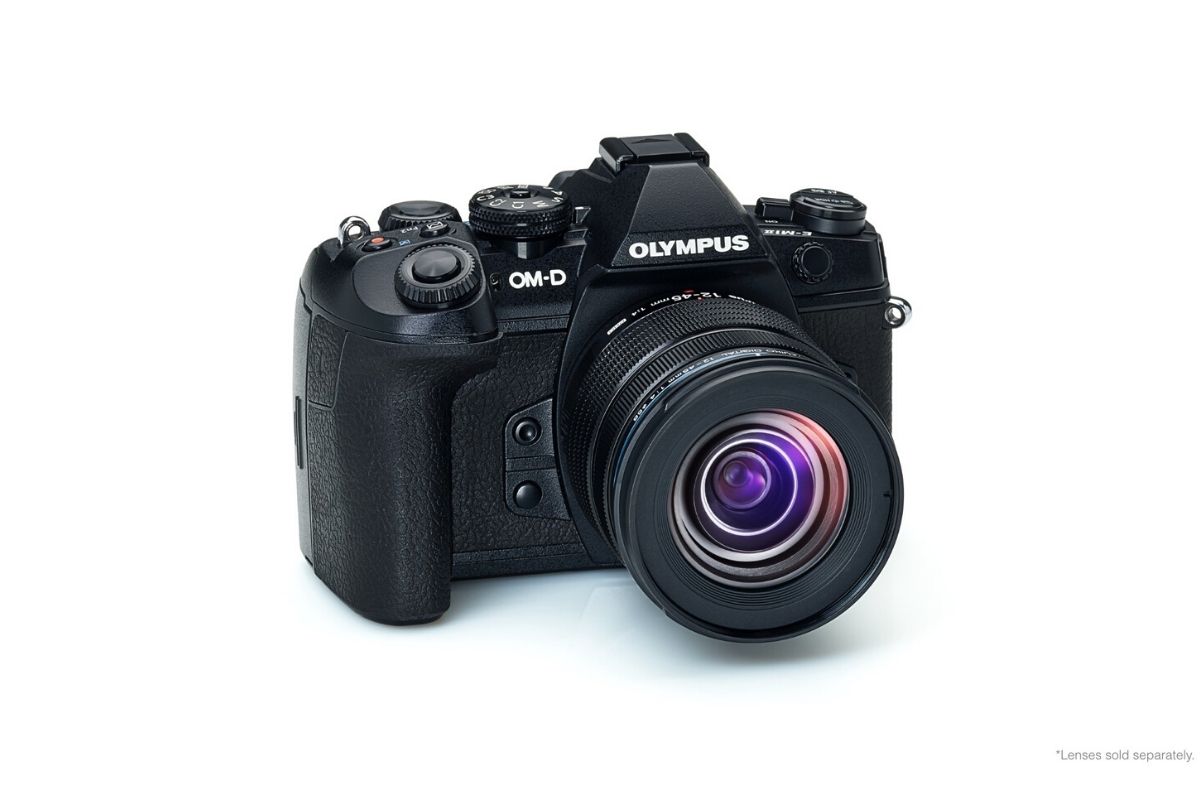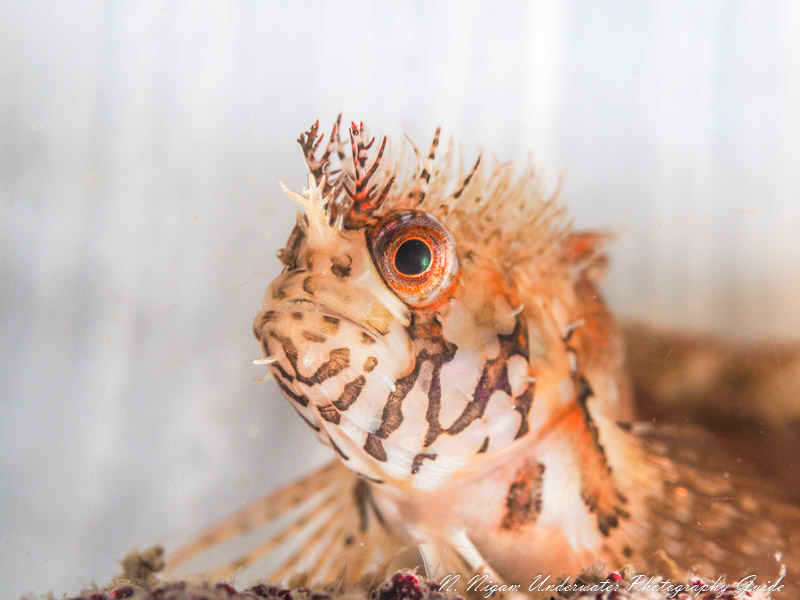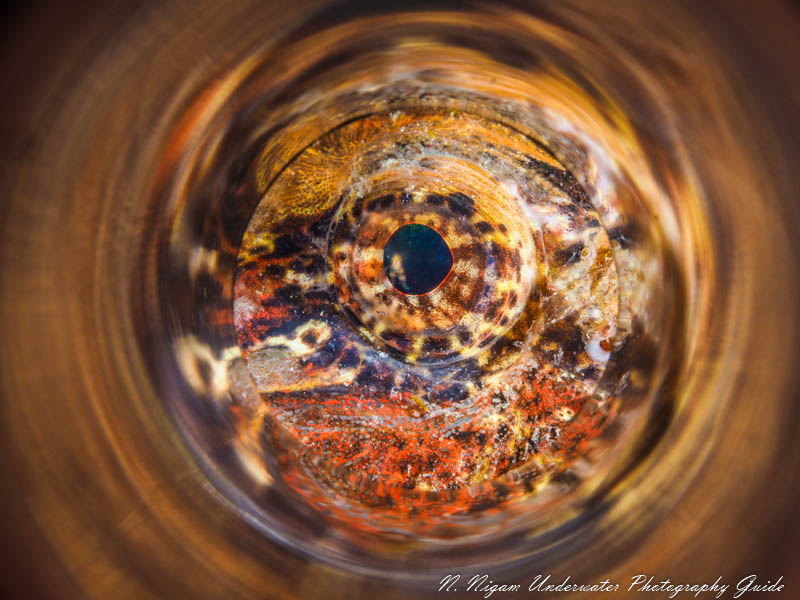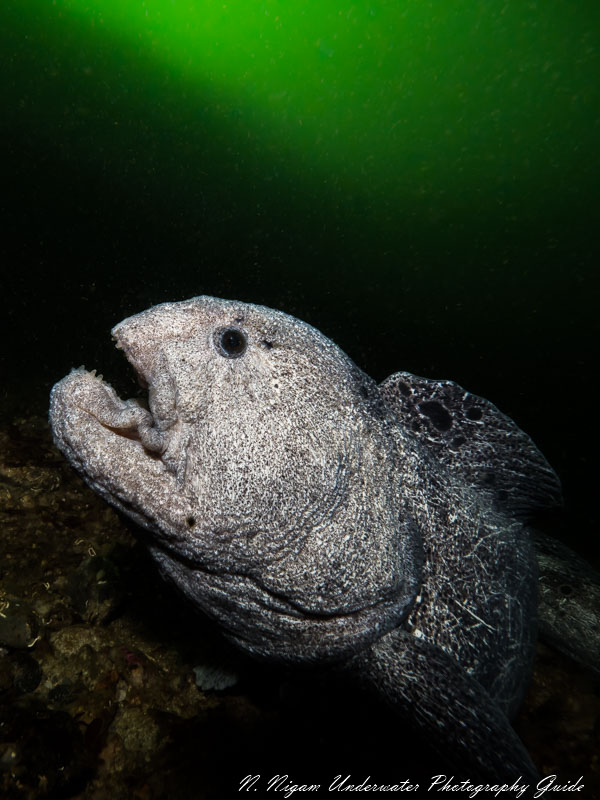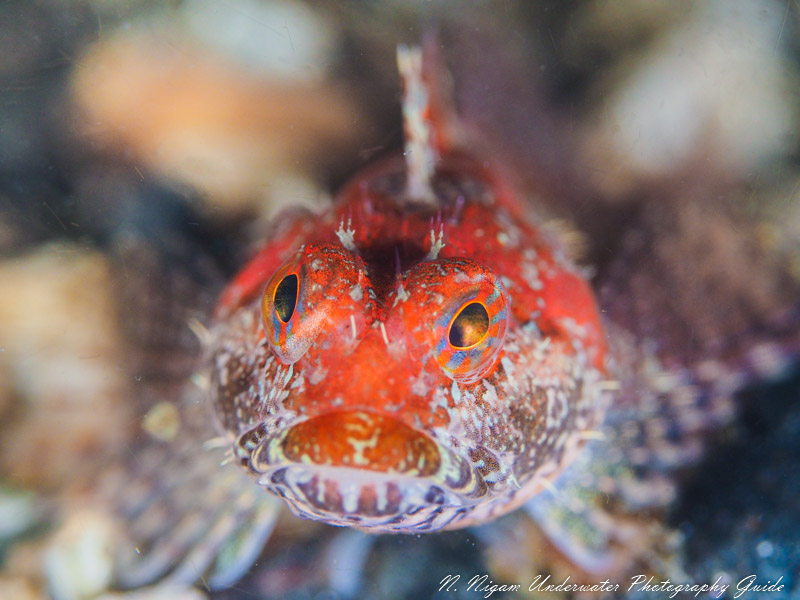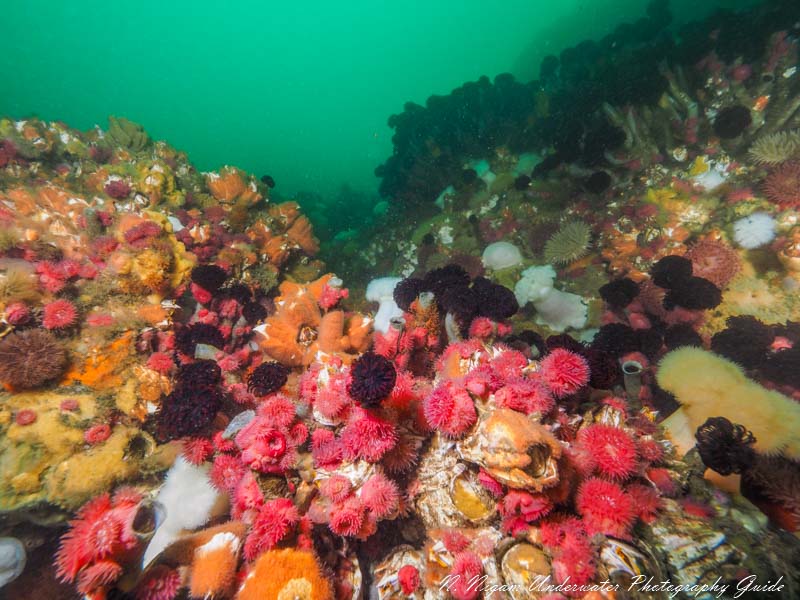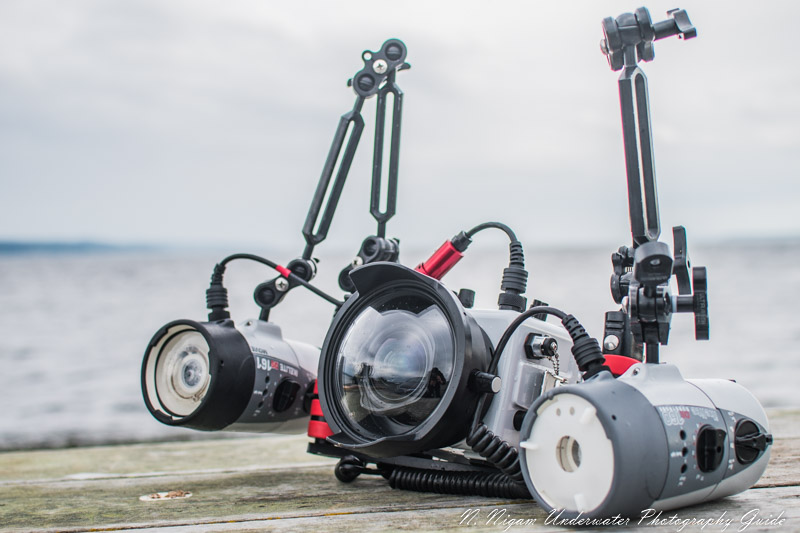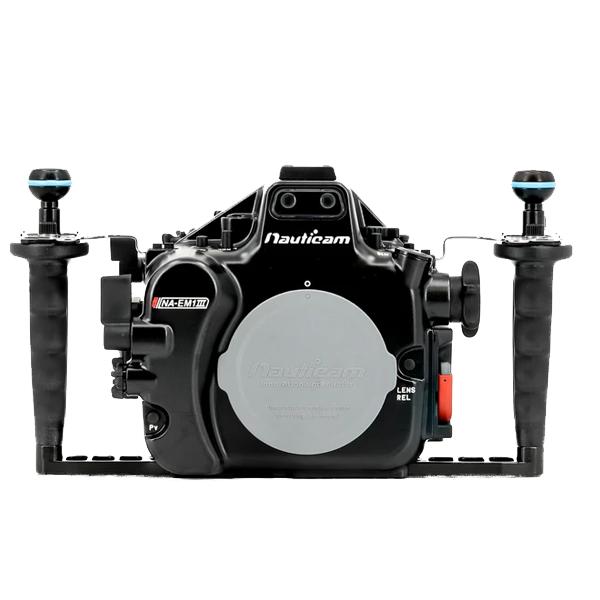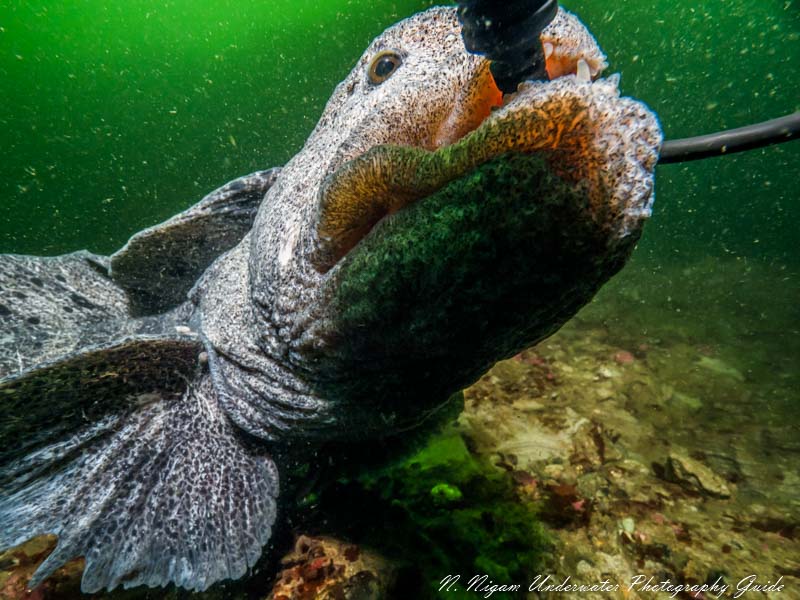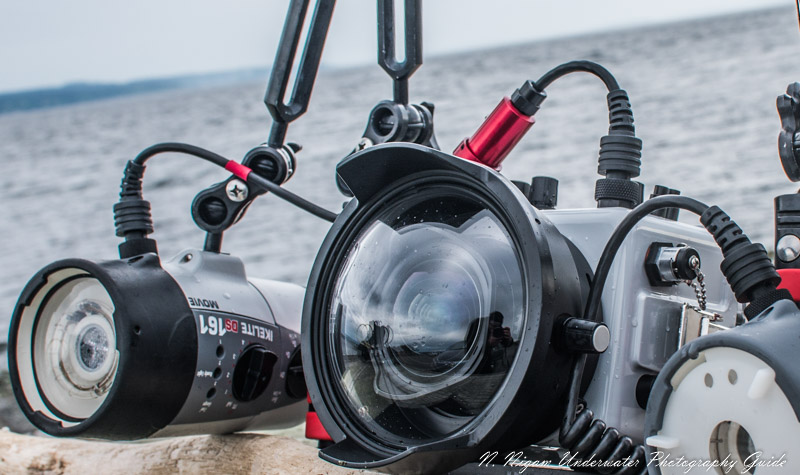
The Olympus OM-D E-M1 Mark III is the newest top-shelf micro four thirds camera on the market as of 2020. Although it proves to be similar to the Mark II, it’s the best option out there for underwater photographers looking to use high quality Olympus and Panasonic glass on the highest quality body. It’s an especially great camera for topside-oriented photographers, as it is packed with interesting features that were initially offered in the Olympus EM1X. If you really want the best that Olympus has to offer in a camera, the OM-D EM1 Mark III is it.
That being said, the camera market has changed quite a bit since Olympus had a dominating hold on mirrorless cameras. Now, in 2020, there are many more options out there that rival Olympus micro four thirds systems, and many of them are full frame/APS-C releases. In order to compete with cameras such as the Nikon Z6, Nikon Z50, Sony A6400, Sony A7R III, and Canon EOS R, Olympus needed to do something drastic. Unfortunately, the OM-D E-M1 Mark III isn’t too different from the E-M1 Mark II for underwater photography. There are many mirrorless options on the market for the same price point that vastly outperform the E-M1 Mark III.
HOWEVER, there is one redeeming quality, or rather housing, that makes the E-M1 Mark III a viable competitor for underwater photography – the Ikelite E-M1 Mark III Housing. The Ikelite housing’s small size and low price point is compelling enough to make the E-M1 Mark III a good option for photographers looking for the highest quality imagery at a good price and small size.
We had a chance to take the Olympus OM-D EM-1 Mark III diving in some of the roughest conditions we faced all year! The camera held up to the challenge and despite less than arm-length viz, we came back with some great photos. Any underwater photographer who has this camera will not be disappointed.
Status: Available now
U.S. MSRP Olympus OM-D E-M1 Mark III: $1,800
Jump to Section
E-M1 Mark III vs Mark II | Specifications | Key Features
OM-D E-M1 Mark III for Underwater Photo and Video | Underwater Lenses
Underwater Housings | Conclusions
Purchase an Olympus OM-D E-M1 Mark III Housing at Bluewater Photo:
Ikelite E-M1 Mark III Underwater Housing
Nauticam E-M1 Mark III Underwater Housing
Olympus O-MD E-M1 Mark III vs E-M1 Mark II
As far as underwater photography is concerned there’s no real difference from the O-MD E-M1 Mark II and the Mark III. The sensor, body, autofocus system, image stabilization, and video are all esentially the same. There are a couple of difference. The gyro sensor in the EM1 Mark III is the same as the one in the EM1X and can recover 7 stops instead of the 5.5 stops in the EM1 Mark II. So it is a little better in that regard. The EM1 Mark III also allows you to create custom target AF area modes. The body is essentially the same with a few button changes. Therefor the Mark III will still need new housings and will not be compatible with Mark II housings.
Olympus O-MD E-M1 Mark III Specifications
- 20.4 Megapixel Live MOS Sensor
- TruePic IX Quad Core Processor (faster upgrade to Mark II)
- 121 point cross-type phase detect AF system
- 5 axis image stabilization up to 7 stops
- 2.36M dot electronic viewfinder
- 3 inch touch LCD
- Weathersealed
- 15fps [H]/10 fps [L] burst shooting with mechanical shutter
- Topside features including handheld high res shot mode, live ND filter, electronic shutter
- 4K video @ 30 fps with an OM-Log mode
- 440 shot battery life rating
- 90.9 mm X 68.9 mm X 134.1 mm
- Weight: 580 grams
Features
Build and Ergonomics
The build of the Olympus OM-D E-M1 Mark III is almost identical to the Mark II. They share dimension and weight. However, a few buttons have been moved around and the dial changed a little. Due to these changes, the Mark III is not compatible with Mark II housings. Like the Mark II, the EM1 Mark III is solid, weatherproof, ergonomic, and a little larger than historic micro four thirds cameras except the EM1X.
We think the largest ergonomic benefit for underwater photographers is the size of this camera. It’s one of the last mirrorless cameras that is still a good bit smaller than DSLRs and full-frame mirrorless cameras. That being said, it is still larger than older PEN systems. The reason it is so nice underwater is that Olympus lenses are quite a bit smaller than full frame lenses so housings can be made to a much smaller size.
Image Quality
The sensor on the Mark III is essentially the same as the Mark II, with a couple of upgrades. It still has the same micro four thirds, 4:3 aspect ratio and a resolution of 20.4 megapixels. The new sensor performs better when it comes to shadow recovery and worse when it comes to highlight recovery. This could actually be a detriment to underwater photographers who are shooting wide angle and want to recover details from sunballs. As an underwater photographer, I often find myself recovering highlights as much as I do shadows.
That being said, when we came home with the RAW files, we didn’t find a noticeable difference in the image quality between the Mark II or Mark III. Both cameras will get you great images. We do think the images are quite impressive for a sensor of that size. Olympus RAW files are wonderful to work with as well. It’s easy to make white balance and color changes. They are rich with details and handle scenes with wide dynamic range quite well. The camera handled surprisingly well in low light, with less noise than expected at higher ISOs. That being said, we still recommend staying at ISO 400 and below with micro four thirds cameras.
This wolf eel photo was captured at the bottom of a submarine cliff, resulting in a large dynamic range. We were really happy with the details on the eel’s face.
Autofocus System
The 121 point phase-detect autofocus system is the same as on the Mark II. It covers 75% of the vertical and 80% of the horizontal area of the sensor, which is actually quite small for most modern mirrorless cameras. The O-MD E-M1 Mark III does have a couple of improvements however – the camera can analyze images that have been previously captured to improve accuracy. The Mark III aslso allows you to select custom autofocus target areas which can be beneficial when switching between a quick or slow subject. It also allows you to differenciate the subject area from the background.
Overall, we found the autofocus to be quick and snappy. When compared to the lower-end OM-D E-M5 Mark III, the AF is about the same speed but much more accurate. Especially in low light. There were circumstances when we had wolf eels swimming towards us in very low visibility and the camera never missed a beat. At times the AF felt more accurate than even our Nikon Z6.
Video
Olympus isn’t known for it’s video capability, and they didn’t try to improve the video capability of the Mark II. The E-M1 Mark III has the same 4K video @ 30 fps resolution with no sensor crop. The OM-Log profile available in the Mark III is also available for the Mark II for a firmware update. For any micro four thirds user who wants excellent video, the Panasonic GH5 is still the camera of choice.
We took some sample underwater video with the camera and felt that it was quite good, but the white balance could be improved. The details came out really nicely in 4K. For casual 4K video, this camera works. It’s definitely better than a GoPro.
Olympus OM-D E-M1 Mark III for Underwater Photo and Video
Overall, the Olympus OM-D E-M1 Mark III is a great camera as far as micro four thirds cameras go. For underwater photography it’s the top of its class. It features great 20 megapixel image quality, quick autofocus, and decent video. However, at this price point, we think it’s a compelling camera for photographers that already have the Olympus and Panasonic lesnes or want a relatively small mirrorless underwater camera. Olympus lenses also tend to perform better than Sony lenses underwater, which should be a consideration for anyone looking at the Sony A6000 series.
In comparison to the Mark II – you’ll get the exact same image quality, video quality, and autofocus speeds, so it doesn’t make sense to upgrade to the Mark III for underwater photography. If you want the topside gimicks such as high-res hand held shooting or built in ND filters, then a Mark II to Mark III is a good option.
In a practical sense, we the the E-M1 Mark III performed great underwater. Ultimately, the autofocus accuracy was better than the OM-D E-M5 Mark III, and its compact size made it easy to navigate even the craziest whirlpools we encountered while diving some of the nations fastest marine currents. The controls underwater are relatively straight forward, though we do recommend using the custom AF area selection feature as the AF box is a little small.
Best Lenses for Underwater Use
The Olympus OM-D E-M1 Mark III features a standard Micro 4/3 lens mount, allowing it to use all Olympus 4/3 lenses, plus those from 3rd parties like Panasonic. Below are our recommendations for fisheye, wide-angle and macro lenses.
Fisheye Lenses
There are two choices for fisheye lenses, ideal for capturing reefscapes, big animals, wrecks, close-focus wide-angle and other large underwater scenes. The new Olympus 8mm Pro fisheye offers the best image quality and lightning fast speed of f/1.8. The Panasonic 8mm fisheye lens has long been our go-to lens, delivering great photos with a full 180 degrees of coverage and widest aperture of f/3.5. Both lenses have a very close focusing distance, you can practically focus on the dome port!
If you are unsure about getting a fisheye lens because of its limited topside use, the good news is that the E-M1 Mark III includes in-body distortion correction for the Olympus Fisheye lens. You can view the effects of the distortion correction in Live View while taking your photos, allowing you to use the fisheye lens as a wide angle lens as well.
Wide-Angle & Versatile Lenses
The E-M1 Mark III has many different wide-angle and mid-range zoom lenses to suit every underwater photographer. For wide-angle shooting, helping capture subjects like whales, sharks and sea lions, the newer Olympus 7-14mm Pro lens and the classic Panasonic 7-14mmare your choices. Similar to the fisheye lenses from these brands, the Olympus will deliver slightly better image quality, but at a higher price. Wide-angle shooters will love the Olympus or Panasonic 7-14mm; choose Olympus for the best possible optic quality. The Olympus 9-18mm lens is a great choice for those on a budget who still want a good wide-angle lens.
Kit lenses are an affordable way to get your camera in the water while also providing mid-range focal lengths ideal for shooting models in a pool. The Olympus 12-50mm is a great choice for ocean shooting, with a nice zoom range as well as built-in macro mode for capturing those small subjects.
The Panasonic 12-35mm F/2.8 lens is popular for underwater videographers, as it is a great focal length for underwater video, and the bright F/2.8 aperture is important for video. The Olympus 12-40mm Pro captures high quality images with an F/2.8 aperture and professional level glass and is another great option for underwater videography.
- Olympus 7-14mm Pro lens
- Panasonic 7-14mm
- Olympus 9-18mm lens
- Olympus 12-50mm
- Panasonic 12-35mm F/2.8
- Olympus 12-40mm Pro
Macro Lens
The best option for shooting macro with the Olympus OM-D E-M1 Mark III, is the Olympus 60mm macro lens. This lens delivers sharp 1:1 macro images and can be used with wet diopters outside your port in order to magnify your smallest subjects into great supermacro images. If that lens is too much, or you like shooting slightly larger macro, we recommend the Panasonic 45mm macro. This lens is a bit more money than the 60mm, but offers more flexibility in larger subjects. However, it is not ideal for super macro.
Currently there are two excellent underwater housing for the Olympus OM-D E-M1 Mark III offered at Bluewater Photo. The Ikelite EM1 Mark III housing is a great, lightweight polycarbonate housing. The Nauticam EM1 Mark III housing is a precise, machined aluminum housing.
Ikelite E-M1 Mark III Underwater Housing
The Ikelite housing is compact and offers Ikelite’s latest upgrades and ergonomic controls. The housing is built from ABS-PC which provides strength and corrosion free performance with minimal maintenance. The Ikelite housing is the most affordable and lightweight option with the best underwater buoyancy. The back of each Ikelite housing is clear which makes it easy to see any issues inside the housing in real time. Perhaps the most compelling aspect of the housing is it’s small size. The Mark III housing features a Dry Lock Micro port system which keeps the overall package very small and easy to travel with – much smaller than mirrorless competitors that need a larger port system. We took the Ikelite E-M1 Mark III housing diving and had an excellent time shooting with it in some really tough conditions. Check out the story behind the review here.
Purchase the Ikelite E-M1 Mark III housing at Bluewater Photo!
Nauticam Olympus E-M1 Mark III Underwater Housing
As is typical with Nauticam, this is a high quality aluminum housing which provides full camera control. Although the housing is more compact it does not sacrifice anything with functionality or ergonomics. More importantly, buttons and dials have the same quality and feel as with Nauticam’s DSLR housing offerings.
As is standard in previous housings, this one includes the option for a vacuum monitoring system along with the built-in leak detection. A new feature is an option to reset the vacuum detection system directly from the port mount, making lens changes that much easier. It also gives access to Nauticam’s wide range of useful accessories.
Purchase the Nauticam E-M1 Mark III housing at Bluewater Photo!
Conclusions
After an almost 4 year wait, the Olympus OM-D E-M1 Mark III’s release was a long time coming – though we would have been happy to wait a little longer for a little more. That being said, the E-M1 Mark III performed great underwater and we are very happy with the resulting photos. With the option to use superior Olympus glass and smaller underwater housings, the Mark III proves to be a good option for those looking for good image quality and small size.




